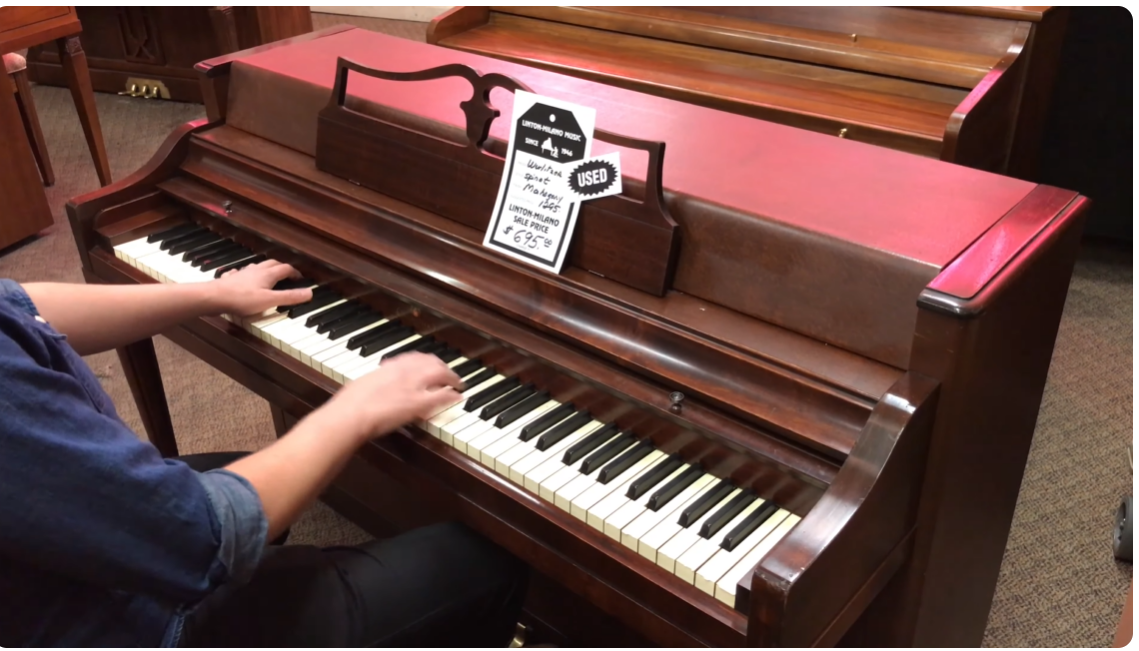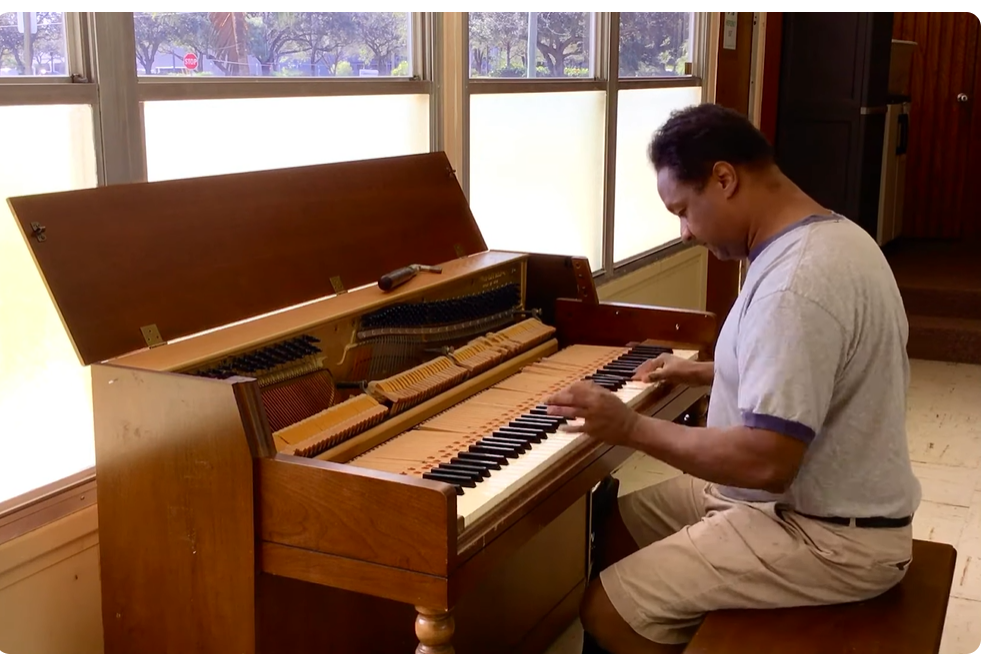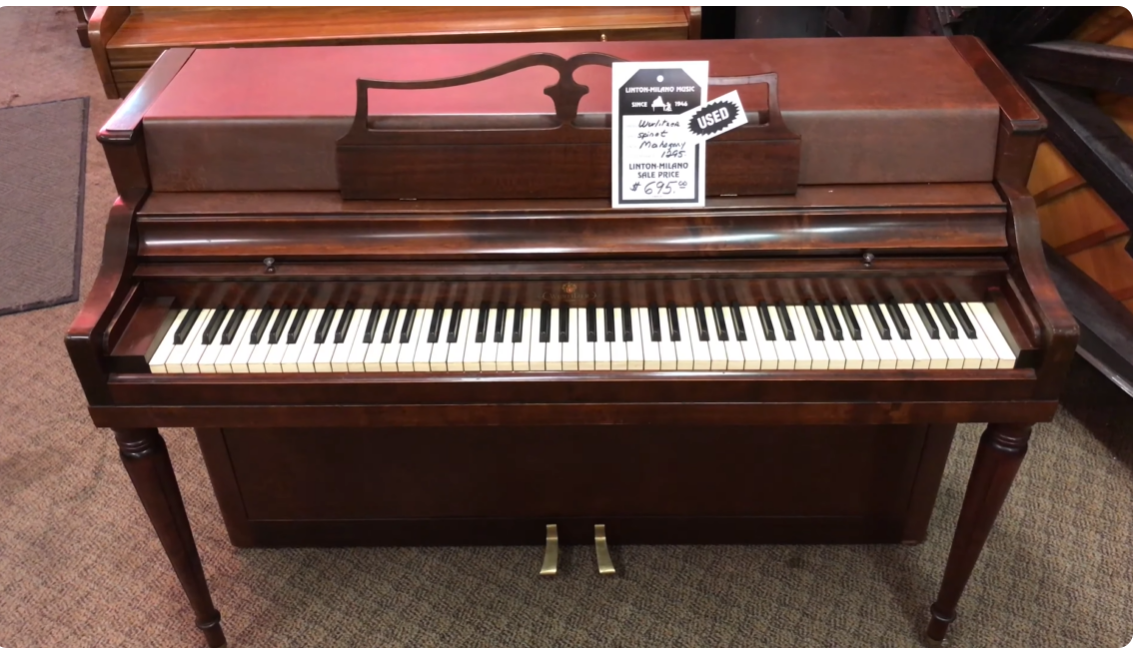How Much Is a Wurlitzer Piano Worth?
If you’ve landed on this page, chances are you’re either thinking about selling your Wurlitzer piano or considering buying one. But how do you figure out what a fair price is? How do you decide what to list your piano for? Asking too much can scare off potential buyers, while asking too little might mean you’re giving away a great deal. So, what exactly is a Wurlitzer piano worth?
The truth is, the price of a piano depends on many different factors. Since Wurlitzer pianos are no longer being made, their value is mostly tied to how well they’ve held up over time. Unfortunately, vintage Wurlitzer pianos rarely fetch thousands of dollars these days. I’ll explain why as we go along. The most important thing is the piano’s condition — how playable it is for another pianist. If it needs a lot of expensive repairs or restoration, it likely won’t be worth much at all.
Table of Contents
ToggleHow to Decide on Piano Pricing
When it comes to selling a piano—especially if it’s not a top-tier brand like Yamaha, Steinway, or Kawai—the main factor that influences the price is the piano’s condition. Yamaha and Steinway are well-known because they hold their value remarkably well in both the upright and grand piano markets.
Many buyers seek out Yamaha or Steinway pianos simply because of the brand name. While age and condition matter, people often choose a Yamaha over other brands like Kawai or Feurich just for that brand recognition, even if another piano might suit their needs better.
Once you step outside these highly sought-after brands, pricing depends much more on the piano’s condition and age. Ultimately, it boils down to what the buyer is willing to pay and how playable or useful the instrument is for them. If you’re lucky and you market the piano well, you’ll find the right buyer willing to pay a fair price. Still, there’s usually some negotiation involved.
If you happen to have a Wurlitzer piano to sell, my advice is to be honest about its condition and who it’s really suitable for. It’s unlikely to meet the needs of a concert artist or someone pursuing a music degree. On the other hand, it’s also unrealistic to ask for $2,000 if the piano is really only fit for a beginner—there are more affordable and appropriate options out there.
Piano Pricing: How to Make the Right Decision
If you’re planning to sell a piano, the first thing you need to understand is that brand reputation plays a huge role—especially when dealing with names like Yamaha, Steinway, or Kawai. These iconic brands hold their value incredibly well. Yamaha is a top pick for upright pianos, while Steinway dominates the grand piano market. People often seek these names specifically, even if other pianos might be more suitable for their needs.
This brand loyalty can override more practical considerations. A buyer might choose a Yamaha over a Kawai or Feurich simply because it’s a Yamaha. The condition, sound, and feel of the instrument still matter—but the name alone carries serious weight.
Once you step outside this elite circle of well-known brands, the rules change. The selling price becomes heavily dependent on the piano’s condition and its usefulness to the player. Age, maintenance history, cosmetic appearance, and playability become the key factors in determining how much someone is willing to pay.
If you market your piano well and are patient, you might find the ideal buyer—someone at just the right playing level who sees value in what you’re offering. But be prepared for compromise. The chances of getting a high price for a lesser-known brand are low unless the instrument is in excellent condition and suits the buyer’s needs perfectly.
Let’s take a Wurlitzer, for example. If you’re trying to sell one, you’ll need to start with a realistic assessment. Be honest about its current condition, tuning stability, and overall playability. It’s unlikely to appeal to a concert pianist or someone pursuing a music degree. Expecting a high price in that case isn’t realistic.
If the piano is better suited for beginners or casual players, it’s important to price it accordingly. Asking something like $2,000 for a Wurlitzer that’s only good for basic practice won’t get you far. There are many new digital and used acoustic pianos that can offer better value for that kind of money.
Who Are Wurlitzer?

Wurlitzer is an American company that began in Cincinnati in 1853. It started as an import-export business, bringing in string, brass, and woodwind instruments from Germany. Over time, Wurlitzer expanded into building pipe organs and player pianos, gaining a reputation in both areas.
By the 1880s, the company began producing acoustic pianos—mainly entry-level models like spinet and console pianos. While they also made some studio uprights and grand pianos, these are rare and hard to find today. Most Wurlitzer pianos that show up on the market are spinet or console models from the 1960s. In the 1970s, Wurlitzer also ventured into electric pianos and jukeboxes. Eventually, the company was bought by Baldwin, which stopped making Wurlitzer pianos in 2009. Today, Wurlitzer focuses on replacement parts for its older products and also manufactures vending machines.
The most iconic Wurlitzer instruments were the large pipe organs made between 1914 and 1943, many of which still exist. However, the pianos most commonly found today are the small acoustic models built in the 1960s.
Are Wurlitzer Pianos Good Pianos?
When it comes to Wurlitzer console and spinet pianos made around the 1960s, the answer is—it depends on what you’re looking for. Like many piano manufacturers, Wurlitzer produced both higher-quality instruments and more budget-friendly models. Most of the Wurlitzers still found in homes today were designed as affordable, entry-level pianos for amateur players. They weren’t built for concert stages or professional use.
That said, for home use and casual playing, these pianos are more than adequate. However, if you’re a serious musician or plan to practice several hours a day, a Wurlitzer from this era may not meet your needs in the long run.
While they may not match the craftsmanship of top-tier brands like Yamaha, Steinway, or Kawai, Wurlitzer pianos were solidly built and surprisingly durable—which is why so many are still around today. Compared to many modern pianos mass-produced in the Far East in recent years, a vintage Wurlitzer is often the better choice. In fact, I’d choose a Wurlitzer over most of those newer models almost every time.
If you’re thinking about buying a Wurlitzer, it’s important to try one out first. Only by playing it yourself can you truly decide if this piano feels right for you and if it deserves to be called a “good” piano in your eyes.
How Much Is a Wurlitzer Console Piano Worth?
Let’s get to the heart of the matter—what’s a Wurlitzer piano actually worth?
On average, Wurlitzer acoustic pianos typically sell for anywhere between $600 and $1,500. Where your piano lands on that scale depends on a few key factors.
Console models, which are at least 41 inches tall, tend to be at the higher end—closer to $1,500—especially if they’re in good condition and have had parts replaced or reconditioned. Spinet models, which are smaller and more compact, usually fall on the lower end of the price range.
If you’re selling a Wurlitzer and you’re not a dealer, it’s likely you’ll get closer to the lower end, particularly if the piano has noticeable wear and tear. Issues like cosmetic damage, a cracked soundboard, mold, or woodworm can significantly lower the value—or even make the piano unsellable.
Whether you’re buying or selling, always evaluate the condition and age of the piano and price accordingly. Transparency and fairness go a long way.
My Recommendation

While Wurlitzers have their charm, I actually recommend considering a digital piano instead.
Here’s why: for around $1,000, the same amount you might spend on a Wurlitzer, you can get a high-quality digital piano that takes up just as much space, but delivers much more in terms of sound quality, versatility, and long-term playability.
A good digital piano can take you from beginner to advanced levels, while an acoustic Wurlitzer—especially an older one—might start to hold you back once you reach the intermediate stage.
If you’re leaning toward a digital option, be sure to do some research—there are a lot of myths out there about digital pianos. I’ve tackled quite a few of them in my other articles, along with tips on choosing the right instrument and what to expect as you learn.

